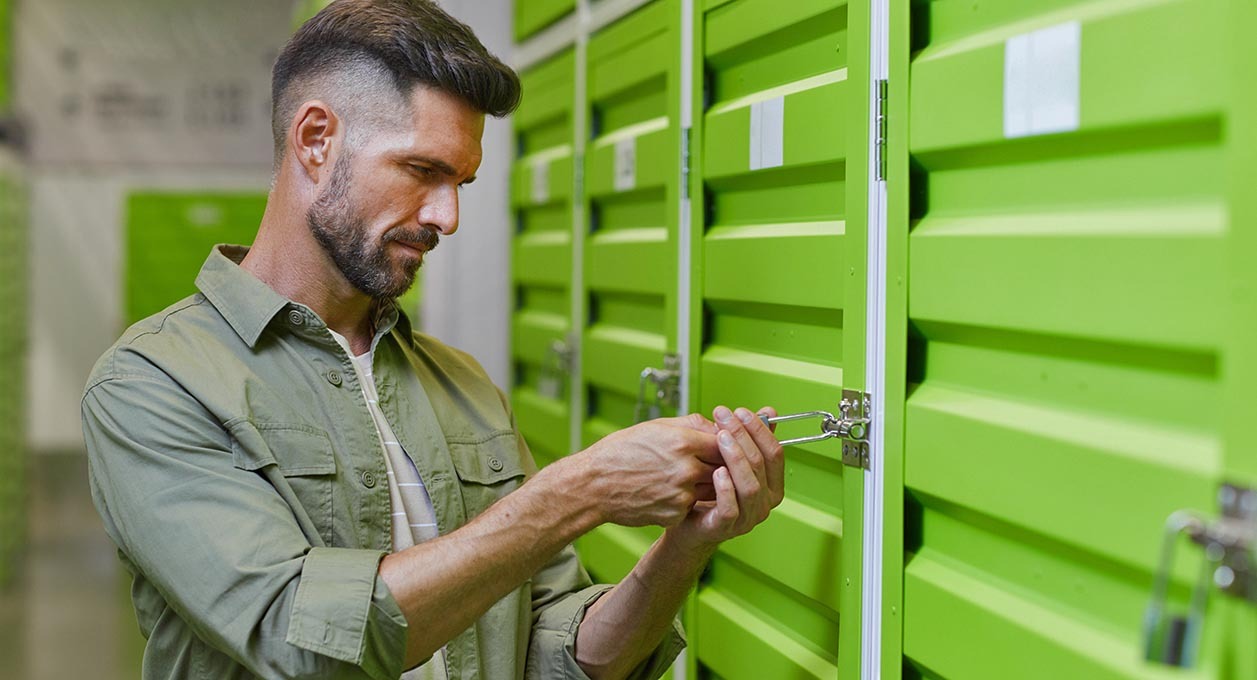While you might think nothing is safer than keeping your positions in a contained self-storage facility, they present an attractive opportunity for organised crime groups – especially those ill-equipped regarding security measures.
However, self-storage facilities have a specific duty of care to adhere to as they’re tasked with protecting someone else’s valuables – meaning that every security avenue must be explored to minimise their exposure to theft.
But how do you deter would-be-criminals from your self-storage facility, you ask? In this article, we discuss several top security measures essential for any self-storage facility to provide peace of mind to its customers and maintain a secure environment.
From enforcing perimeter security with latched gates and implementing smart-security systems to employing around-the-clock security and practising fire/other safety measures – keep reading as we dive into how to keep your customer’s valuables safe.
Perimeter Security
The first step towards keeping your self-storage facility secure is reinforcing the perimeter to ensure nobody with unauthorised access can walk onto the premises.
If your headquarters is near a busy main road or a public footpath, you want to minimise the chance of people stumbling onto your premises.
The best way to ensure this doesn’t happen is by fencing off the perimeter of your business to deter unauthorised access.
When we see a solid fence or wall with limited access points, we automatically know that it’s off-limits as it acts as a visual deterrent, like surveillance cameras.
Furthermore, install electronic gates or barriers at the entrance, which require a personalised code, key card, or biometric system to gain access. However, any gates/barriers need regular maintenance once installed to function effectively.
Using fencing contractors like Golden Larch Contracting, you can purchase spare parts for your gates/barriers and take advantage of their instalment service.
Consider visiting their website to browse their complete range of commercial gates, see examples of their work, and discover how their products/services could help you increase the safety measures at your workplace today.
CCTV Surveillance
Video surveillance is a fundamental security measure in any business security strategy. Not only can CCTV help you monitor areas susceptible to suspicious activity, but they also act as a visual deterrent in the hopes of minimising potential attacks altogether.
For best results, thoroughly sweep your premises and identify the weaker areas. Once identified, strategically place high-resolution surveillance cameras with night vision capabilities in these areas to provide constant monitoring and record potential security breaches even in low-light conditions.
Cameras should cover all key areas, including entry gates, corridors, elevators, and loading docks. As an additional security feature, you could also display signs indicating the presence of surveillance cameras that deter potential criminals.
Once implemented, ensure that you regularly assess and upgrade your camera systems to avoid missing out on the latest tech features!
Alarm Systems And Sensors
Next on your security checklist should be installing alarm systems and sensors, which will work in. conjunction with your CCTV system to safeguard against unauthorised access or tampering.
For the utmost security, you should install these systems on individual units, as well as in common areas and storage facility offices and connect them to a central monitoring station that will notify your workforce or your outsourced around-the-clock security team (more on this later!) in the event of a breach.
As well as alarm systems and sensors, you can install other innovative security accessories such as door/window sensors, glass-break detectors, which can link to your hub and provide an additional layer of security.
For an extra layer of protection, you could also install panic buttons throughout the facility that can be used in emergencies or to summon assistance.
On-Site Security
Although security systems have come a long way over the last couple of years, but they can still experience technical issues or be interfered with, compromising your on-site security.
To prevent this, you could consider enlisting the services of outsourced around-the-clock security companies, which can monitor activities, respond to alarms, and provide a visible presence to deter potential criminals.
As well as outsourcing security companies, you can improve on-site security by implementing strict protocols and procedures for staff members during and after hiring.
This could include but may not be limited to background checks, security training, regular security audits. You should also monitor visitors to the premises and ensure that each new face is recorded, correctly identified, and monitored while inside the facility.
Fire Prevention and Safety Measures
While physical security is crucial, addressing fire prevention and safety within self-storage facilities is equally important. Install smoke detectors, fire alarms, and fire extinguishers throughout the premise and ensure they are well maintained by conducting regular inspections and maintenance.
Ensure your workforce is educated on fire safety protocols, including properly storing flammable materials and understand the risks/signs of a potential fire hazard. Devise a clear evacuation plan which staff understand and prominently display emergency contact information throughout the facility.
See more about security on Skill Builder




